Such popularity is explained by the environmental friendliness of the material and its beautiful appearance, but, alas, the tree has many enemies - it is afraid of fire, moisture, insects, temperature extremes and sunlight. Previously, wood was protected with compounds based on salt and vinegar - today, the industry allows the production of more effective products that give the tree durability and resistance to negative environmental factors. There are so many of these compounds that it becomes difficult to choose the right means to protect wood from decay, fire and other influences. Let's look at the main aspects of a competent purchase.
No. 1. From what and in what cases to protect wood?
Wood protection products are directed against various negative impacts, and the choice depends on the conditions under which the material will be used. The main enemies of wood are:
- moisture(fog, rain, high humidity indoors). A tree is characterized by the ability to absorb moisture and swell with its high content in the environment and, conversely, dry out in dry times. Such fluctuations in volume lead, at a minimum, to cracks, and when building a building made of wood, the entire structure can be seriously damaged. Therefore, it is necessary to treat wood with products that reduce moisture absorption, but do not affect the ability to "breathe";
- mold, fungus, mosses and insects often affect wood at high humidity and limited air access. Rotting, the appearance of moss, the spread of bark beetles, termites, woodworms and other pests affect not only the appearance of wood, but also its structure;
- the fire. Wood is flammable and burns quickly. So far there are no means that would be 100% protected from fire, but there are substances that affect the structure and increase the time of non-flammability;
- UV rays with prolonged and intense exposure, they destroy wood, most of all affecting lignin, a substance that provides rigidity and hardness.
To increase resistance to all these factors, there are a number of specific means - a complex composition does not yet exist, so if wood needs to be protected, for example, from both moisture and fire, the use of several means will be required. 
No. 2. General principles for the selection of wood preservatives
Regardless of which factor the remedy is aimed at, when choosing, pay attention to such nuances:
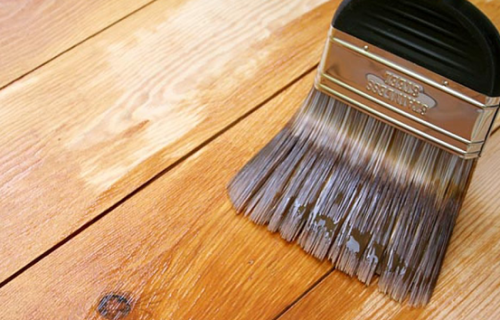
No. 3. Wood protection methods
To ensure the longest possible preservation of wood, a set of measures is used. These are constructive solutions, consisting in the correct placement and layout, as well as regular monitoring of the condition of the wood and the means for protecting the wood themselves.
Protective equipment can be applied in the following main ways:
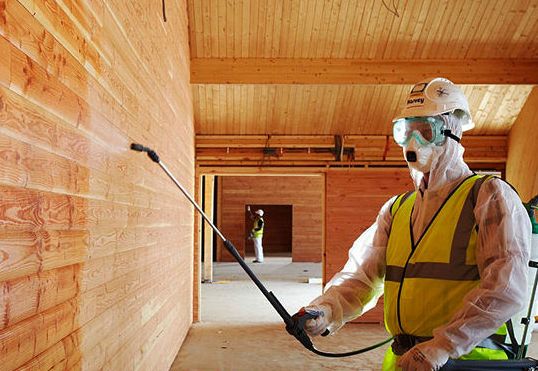
No. 4. Means for protecting wood from moisture
An increased level of humidity is the main enemy of wood, as it not only worsens performance, but also causes fungus to appear. Moisture protection treatment begins with the harvesting of wood, and proper drying is of great importance. Even well-dried material will begin to absorb moisture over time, but in this parameter different types of wood differ considerably. , ash, pine, oak are more resistant to moisture, spruce, fir and beech are moderately resistant, while maple, birch and hornbeam are the most vulnerable. A number of tropical trees (Kumaru, Kusia, Ipe, Sisal) are practically not afraid of moisture and need only minimal protection. 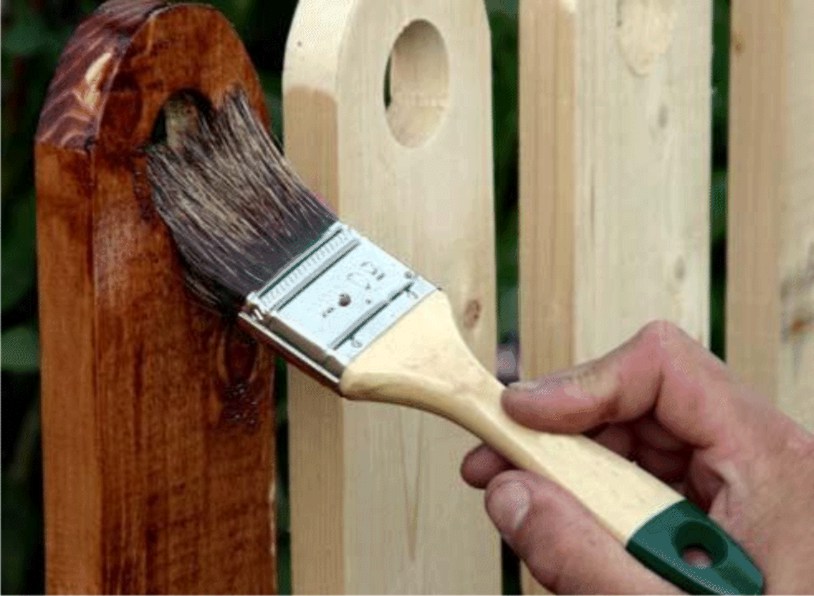
The most important indicator of wood - intracellular moisture. For construction, you can use a material with an indicator of 5-20%, and wood with a moisture content of 9-15% is suitable for the construction of roof structures and interior decoration, and 12-18% for exterior cladding.
To reduce the ability of wood to absorb moisture from the environment, i.e. to reduce its hygroscopicity, use varnishes, oil impregnations and pastes, which are divided into two groups:
- compositions that form a film on the surface, do not differ in sufficient durability, so you will have to repeat the treatment quite often;
- penetrating compounds more durable and able to get into the pores of wood, are used to process fences, house walls,.
As a rule, water repellents do not change the color of the wood, and their effect is that water drops simply roll off the surface without penetrating into the structure. A number of such funds also have a frost-resistant effect. 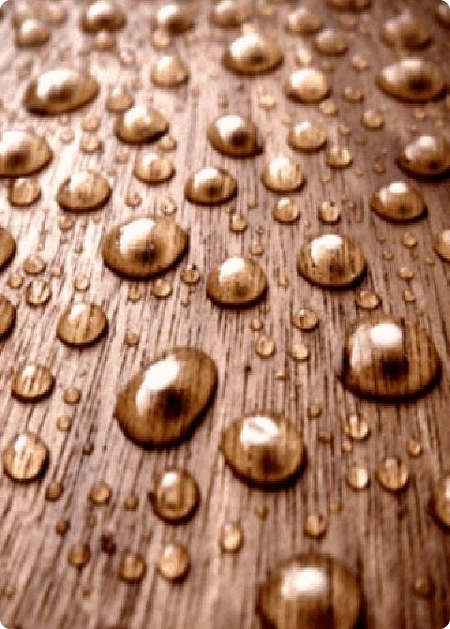
No. 5. Means for protecting wood from decay, mold and insects
Constant high humidity, temperature fluctuations and intense exposure to sunlight make wood vulnerable to microorganisms and insects. As antiseptics are used to prevent mold- means that prevent, but do not kill bacteria. Already during the harvesting of wood, it is covered with antiseptics, re-treatment is carried out after installation and cleaning of the wood. Antiseptics are produced in the form of liquids and pastes, they also reliably protect against insect damage. There is primer type antiseptics, which are used under, but their penetration and service life are short. Antiseptics can be tinted, and experts say that in this way it is much easier to achieve uniform coloring of the walls than when using tinted varnish. 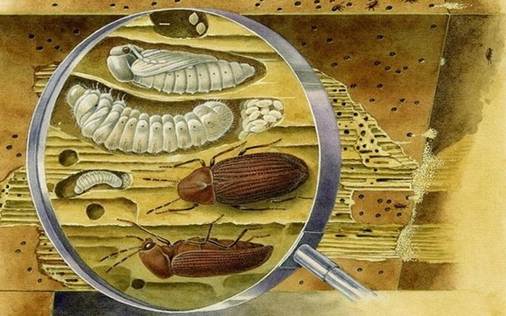
If there are already traces of rot on the wood, then treatment is necessary before using an antiseptic. fungicides- substances that kill fungal and mold spores. The basis in fungicidal solutions can be:
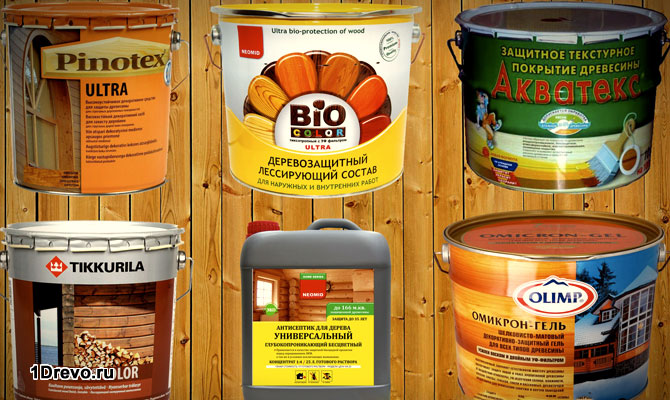
If traces of insects are found on the wood, treatment should be carried out. insecticidal impregnations which are issued:
- water based. They are mainly used for the annual protection of wood during transportation and storage;
- alkyd-based - these are more stable products that are suitable not only as therapeutic drugs, but also as prevention.
Regular monitoring of the state of wood for the smell of rot, the presence of white thin or bluish and brownish films will prevent rotting in time. 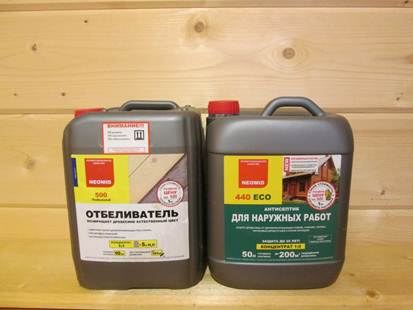
Sometimes you may need wood bleaching products and elimination of bluish, greenish and black spots. Such substances are applied with a brush to damaged areas, and after a few hours the original color returns.
When buying antiseptic formulations, please note that different breeds absorb compounds with different intensity. So, birch and beech have high absorbency, cedar, larch, oak, linden, hornbeam - medium, and spruce and fir - low. In addition, completely different compositions are used for different purposes. If, during transportation, wood needs only preventive treatment, then during the construction of the truss system, it is necessary to use hard-to-wash products that often stain the wood in brownish and grayish shades, reducing its decorative qualities, therefore, such products are not suitable. 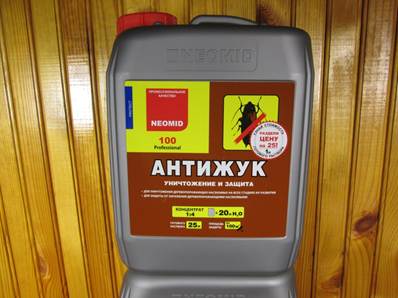
No. 6. Means for protecting wood from fire
When exposed to fire, wood sooner or later ignites, however, large ones resist fire much longer than boards, since a charred layer forms on their surface, which slowly smolders. Any chips and cracks increase vulnerability to flames. Flame retardants are used to protect wood from fire., which are able to delay the ignition and spread of fire.
Flame retardants are available in the following forms:
- liquid formulations: varnishes, impregnations, enamels and;
- solid formulations: fillings and coatings.
Previously, flame retardants were widely produced in solid form, today the market offers mainly ready-made liquid solutions or concentrates. This form of release allows you to use the product more efficiently and at the same time increase safety, because when working with powders, toxic dust is inevitable in the body, and additional equipment is required, which complicates the processing process.
Flame retardants according to the principle of action are divided into:
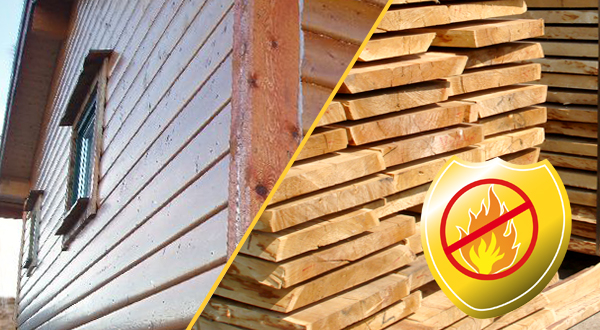
The highest quality protection will be applied in an industrial environment, but you can also carry out such processing yourself with a brush, roller or aerosol. Processing wood with a moisture content of more than 15% is not recommended. For well-dried wood, compounds based on organic polymers are suitable, and for non-wood with a moisture content of 10-15%, it is better to use water-soluble flame retardants to guarantee. Small wooden elements can be dipped into the solution and left there for a period of 30 minutes to 24 hours.
By efficiency, all flame retardants are divided into groups:
- G1 - means, due to the processing of which wood, after a two-minute exposure to the flame of a gas burner, loses up to 9% of the mass;
- G2 - products with weight loss up to 25%;
- G3 - means that do not provide adequate protection for the tree.
For processing and load-bearing structures, protective equipment of class G1 is chosen, in all other cases fire retardants of class G2 are suitable. If the manufacturer does not indicate effectiveness at all, then it is better to refuse to purchase such a product. 
No. 7. Means for protecting wood from ultraviolet radiation
Under the constant influence of sunlight, the wood begins to darken and collapse, so if such an effect on the material is inevitable, negative consequences must be prevented. As a rule, special additives to prevent the harmful effects of sunlight are included in water-repellent impregnations and bioprotective agents, varnishes and paints, as indicated by the corresponding inscription on the package. 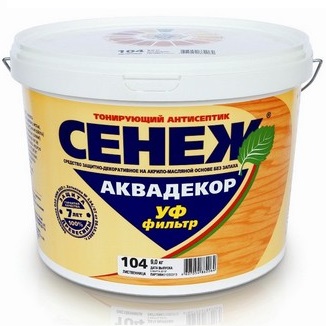
No. 8. The sequence of application of protective equipment
To ensure maximum safety of wood, it is treated with protective agents in the following sequence:
No. 9. Wood preservative manufacturers
Store shelves are filled with various wood preservatives, but not all of them are equally effective. When choosing, you should pay attention to the instructions on the packaging, incl. take into account the influence of the product on the color of the wood, its corrosiveness and the presence of a smell, as well as take into account the name of the manufacturer, which becomes a guarantee of quality. Among the abundance of funds, it is worth highlighting the products of such companies:
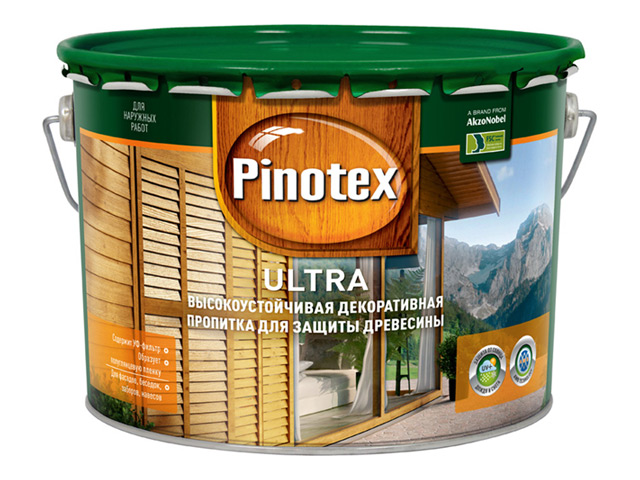
In addition, protective equipment from the Belarusian company performed well. Sadolin, German Dufa, English Dulux, domestic companies Rogneda"(trademark "Aquatex") and " tree healer».
There are many folk remedies for protecting wood from decay and pests, but for best results it is better to give preference to professional preparations and apply them in accordance with the instructions.